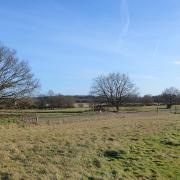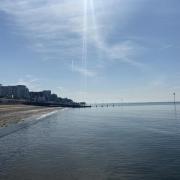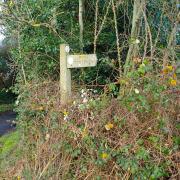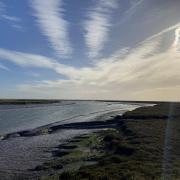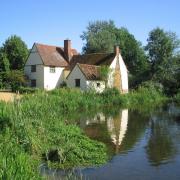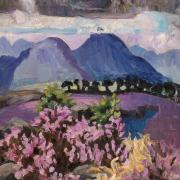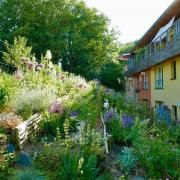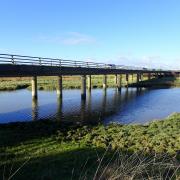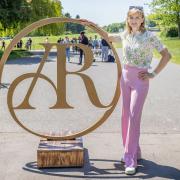Guy Taplin's driftwood bird sculptures became a phenomenon in the art world. Here Guy's biographer, Ian Collins, tracks the evolution of the artist dubbed the wildman of Essex
TO SAY that Guy Taplin is a maker of wooden birds is both to state the obvious and miss his true aim and achievement. The art of alchemy, and of magic, is at work here. He picks up pieces of driftwood and other marine oddments while beachcombing the Essex shoreline, or harvesting harbours and tidal estuaries all over the world, and somehow turns them into symbols of wildness and wilderness. Born on the eve of World War II, and raised as a Cockney sparrow, the young Guy Taplin gave no hint that he might ever be an artist. Though keen on drawing, he was hopeless at woodwork - and to this day remains banned from basic tasks of DIY carpentry. As a child he ran wild in a family of eccentrics and misfits. His ancestors included a pig-tailed Chinaman and a grandmother who was a bridesmaid for music-hall star Marie Lloyd. The infant Guy was a tearaway who learned to love the countryside during war-time evacuation to Herefordshire, and then by roaming woods and hedgerows around Epping. He was fascinated by birds, first as a fanatical egg collector and then as a wildfowler. After leaving school he careered from job to job - as Post Office messenger, meat porter, street trader, lifeguard, hairdresser, cook and gardener. He had a spell in a psychiatric hospital after faking a nervous breakdown to escape the hell of a National Service posting to warring Cyprus and tasted fame in London's swinging sixties with designs for belts with ornate buckles. So nearly a Zen Buddhist monk, he became the Bird Man of Regent's Park - caring for a fine collection of ornamental waterfowl. Almost on a whim, he took a piece of driftwood from the Thames foreshore and then, using only an axe, spoke shave, sandpaper and basic paints, began to carve a crude copy of a mallard drake. His first efforts were mocked. But through determination and repetition he advanced his craft while working through a mountain of disused telegraph poles, railway sleepers, glasshouse frames, theatrical props and sculling boats. Soon he realised that salvage can be more than virtuous for an artist: wood with a previous life has added value - giving the extra dimension of a ghostly echo. Driftwood would become his main medium. Guy struck out fully and finally for art in 1977, in a warehouse workshop on near-derelict Butler's Wharf, sandwiched between studios occupied by Derek Jarman and the Logan brothers. His rapidly-improving work began to be widely seen - and bought. Soon his collectors included architects, actors, film directors and clothes designers. Jackie Onassis snapped up two life-size swans from the window of a Nantucket art gallery for what was then the colossal sum of $20,000. By the time of the Onassis purchase Guy was established with his young family in an old sea captain's house at Wivenhoe, a Bohemian hangout close to the Essex coast often visited by Francis Bacon. He took to working in a converted sail-loft beside his home and also in a pre-war chalet far out on the marshes and regularly marooned by rising tides. Here, with minimal tools and technique, he sets out to produce the spirit of edgy and elemental places in a wooden bird. He works intuitively and in great bursts of energy like a man possessed - horrifying more than one visitor by setting about a delicate bird's head with a hammer. Colour, pattern and texture of each piece of wood are instinctively assessed to enhance his desired design - graining suggesting the outline of a wing and layers of plumage. Then he works swiftly and artlessly to produce immaculate images, from single birds to superb assemblies, from the depths of his imaginative memory. After scores of exhibitions in Britain and abroad, his work is now regularly showcased in the Messum's gallery in London's Cork Street. Movement is everywhere captured - from a preening curlew whose bill brushes a wing as a bow caresses a violin string to a party of sanderlings sweeping over a fragment of salvaged boat. His flights and stands of birds are evermore elegant and lyrical, with egrets or godwits now limbering up like prima ballerinas. Simplification and distortion suit this artist's purpose - a bill or neck may be stretched improbably thin as a single feature represents an entire figure, or else a body is extended into a lithe question mark. And that may be the most fitting form of all, for an air of mystery lingers around the art and the artist. Not that the man himself is in any way precious or esoteric about what he does. When asked how he makes a duck he replies: 'Well, you get a piece of wood and you chop everything off that don't look like a duck.'



